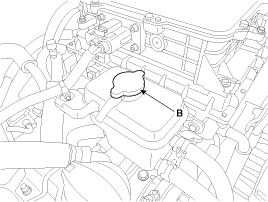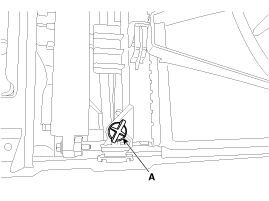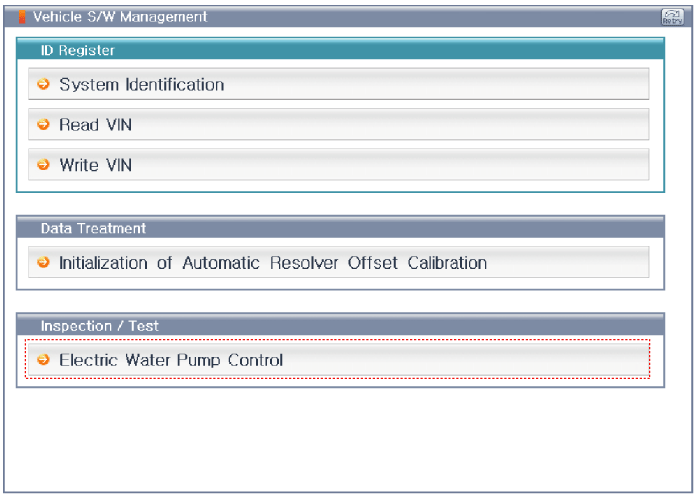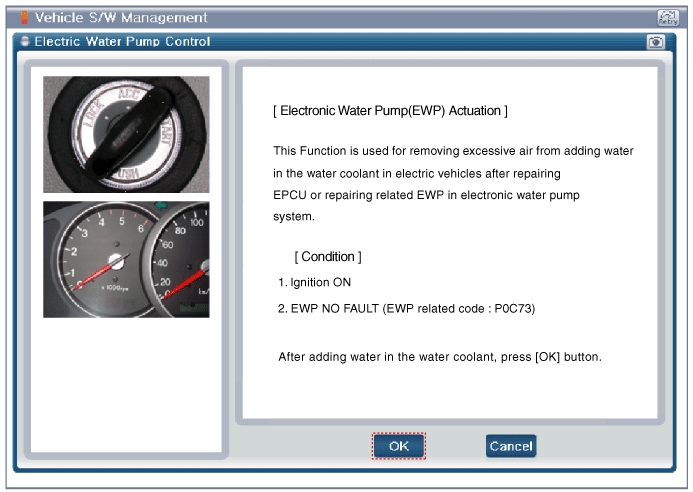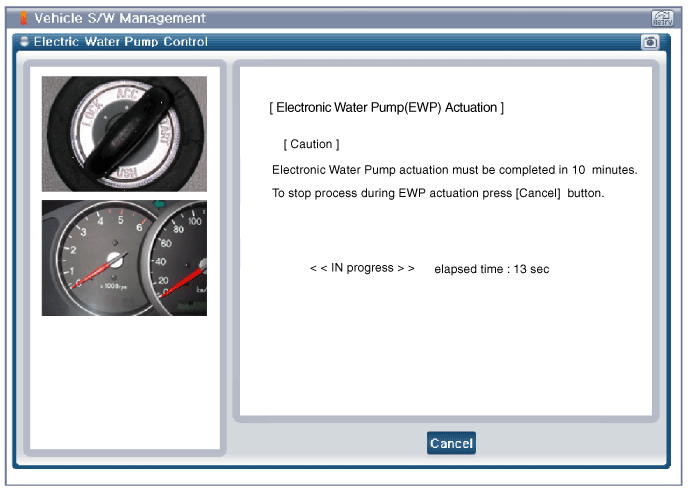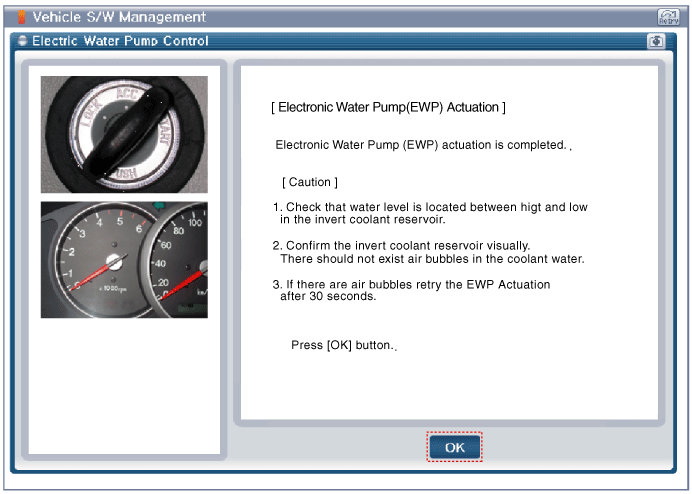Kia Soul EV: Power Train / Cooling System Repair procedures
Kia Soul EV (PS EV) 2015-2020 Service Manual / Maintenance / Power Train / Cooling System Repair procedures
| Inspection |
Radiator hoses
| 1. |
Check radiator hoses for the following
|
Coolant level
| 1. |
Check the coolant level in the coolant reservoir. Make sure it is between the "F" mark and "L" mark. |
| 2. |
If the coolant level in the coolant reservoir is at or below
the "L" mark, add coolant to bring it between the "L" and "F" marks,
then inspect the cooling system for leaks. |
Coolant quality
| 1. |
Remove the radiator cap. |
| 2. |
Check if there are any excessive deposits of rust or scale
around the radiator cap sub-assembly and radiator filler hole. Also, the
coolant should be free of oil.
If it is excessively dirty, clean the coolant passage and replace the coolant. |
| 3. |
Install the radiator cap. |
| Coolant Refilling And Bleeding |
Never remove the reservoir cap when the high voltage system
and electric device radiator are hot. Serious burns may be caused when
hot fluid under high pressure escapes from the reservoir. |
When pouring electric device coolant, be sure to shut the
relay box lid and not to let coolant spill on the electrical parts or
the paint. If any coolant spills, rinse it off immediately. |
| 1. |
Make sure the electric device system and electric device radiator are cool to the touch. |
| 2. |
Remove reservoir cap (A).
|
| 3. |
Remove the under cover.
(Refer to Motor & Reduction Gear - "Under Cover") |
| 4. |
Loosen the drain plug (A) and drain the coolant.
|
| 5. |
Tighten the radiator drain plug securely. |
| 6. |
After draining engine coolant in the reservoir tank, clean the tank. |
| 7. |
Fill the reservoir with water through the reservoir cap and tighten the cap.
|
| 8. |
Connect a GDS and then operate the Electric Water Pump (EWP).
|
| 9. |
Repeat steps 1 to 8 until the drained water runs clear. |
| 10. |
Fill fluid mixture of coolant and water (50%) slowly through
the reservoir cap. Push the coolant hoses of the radiator so as to bleed
air easily.
|
| 11. |
Connect a GDS and then operate the Electric Water Pump (EWP).
|
| 12. |
When the Electric Water Pump (EWP) operates and electric
device coolant circulates, refill electric device coolant through the
coolant filling bottle. |
| 13. |
Bleeding of the electric device cooling system is completed
when the operational sound volume of the Electric Water Pump (EWP) gets
lower and when no air bubbles can be seen in the coolant filling bottle.
|
| 14. |
After air bleeding is completed, stop the Electric Water Pump
(EWP), add electric device coolant to the “F” level on the electric
device reservoir and install the electric device reservoir cap and the
electric device reservoir cap.
|
 Battery Repair procedures
Battery Repair procedures
Inspection
Battery Voltage and Status
Check the battery voltage and status using the battery tester.
Battery Terminal
1.
Move back and forth to check that the battery terminals (A) are loose or ...
 Reduction Gear Oil Repair procedures
Reduction Gear Oil Repair procedures
Inspection
1.
Lift the vehicle.
2.
Remove the under cover.
(Refer to Traction Motor System - "under cover")
3.
Remove the oil filler plug (A).
4.
Check the oil condition and then oil ...
Other information:
Kia Soul EV (PS EV) 2015-2020 Service Manual: Repair procedures
Refrigerant System Service Basics • Since the electric compressor uses high-voltage, POE oil with high volumetric resistivity should be used. • Do not use the same A/C recovery / charging station as in conventional belt-driven compressors. â ...
Kia Soul EV (PS EV) 2015-2020 Service Manual: Rear Combination Lamp Repair procedures
Removal Rear Combination Lamp 1. Disconnect the negative (-) battery terminal. 2. Remove the rear combination lamp (A) after loosening the mounting screws. 3. Disconnect the rear combination lamp connector (A). Turn Signal Lamp Bulb 1. Disconnect the negative (-) battery terminal. ...
Copyright © www.ksoulev.com 2020-2025




